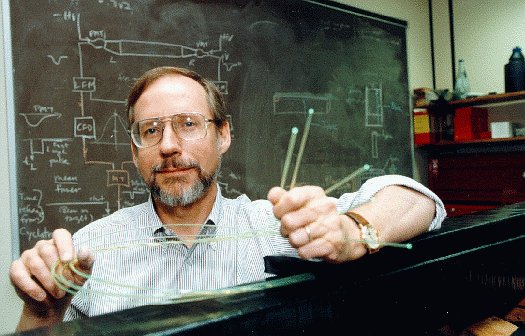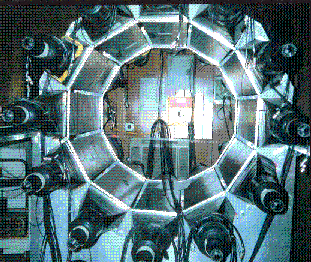 jwatson@kent.edu
jwatson@kent.edu 330-672-0084 (FAX: 2959)
330-672-0084 (FAX: 2959)

Professor
 jwatson@kent.edu
jwatson@kent.edu
 330-672-0084 (FAX: 2959)
330-672-0084 (FAX: 2959)
Ph.D.: University of Maryland, 1970
Dr. Watson and his students research currently focuses on experimental studies of the modification of the nucleon-nucleon (N-N) interaction in the nuclear mean field, through the study of polarization observables for nuclear reactions. The N-N interaction lies at the heart of both nuclear reactions and nuclear structure. We can measure and characterize the N-N interaction by studying free p-p and n-p scattering and reactions. A central question for both nuclear reaction and nuclear structure theory, however, is the modification of this interaction in the nuclear environment. The effect of the nuclear medium on the N-N interaction can be characterized through a mean-field or through a many-body approach.
For energies between 100 and 500 MeV, neutrons and protons have mean free paths in nuclear matter that are typically several times the diameters of nuclei. This means that (p,p), (p,n) and (n,p) reactions with beams in this energy range can be characterized by a single-step, impulsive mechanism, where the modified N-N interaction plays a central role. An especially useful way to probe this modified N-N interaction is through the measurement of spin observables, which generally are sensitive to interference terms in the reaction amplitude, and therefore to subtle modifications of the interaction.
 Dr. Watson and his students and collaborators have been studying,
specifically, spin observables for (p,n)
reactions. Beams of spin-polarized protons are routinely available at
accelerator laboratories. A key feature of this research has been the
development of high-efficiency neutron polarimeters to measure the polarizations of neutrons produced by reactions
induced by beams of polarized protons. The photo shows the latest instrument
developed by this
group. This double-scattering device is called the 2-pi Polarimeter
because of its full azimuthal
coverage of doubly-scattered neutrons. This polarimeter utilizes the spin
analyzing power of n-p
elastic scattering from hydrogen nuclei in organic scintillators. This
analyzing power produces
azimuthal asymmetries in the intensity of scattered neutrons. These asymmetries
can then be used
to deduce the polarization of the neutrons interacting in the polarimeter.
Because the neutrons
double scatter from organic scintillators, neutron time-of-flight techniques
can be used to measure
the energies of the neutrons as well as their polarizations. An extensive
series of measurements
with this device are underway at the
Indiana University Cyclotron Facility (IUCF).
Dr. Watson and his students and collaborators have been studying,
specifically, spin observables for (p,n)
reactions. Beams of spin-polarized protons are routinely available at
accelerator laboratories. A key feature of this research has been the
development of high-efficiency neutron polarimeters to measure the polarizations of neutrons produced by reactions
induced by beams of polarized protons. The photo shows the latest instrument
developed by this
group. This double-scattering device is called the 2-pi Polarimeter
because of its full azimuthal
coverage of doubly-scattered neutrons. This polarimeter utilizes the spin
analyzing power of n-p
elastic scattering from hydrogen nuclei in organic scintillators. This
analyzing power produces
azimuthal asymmetries in the intensity of scattered neutrons. These asymmetries
can then be used
to deduce the polarization of the neutrons interacting in the polarimeter.
Because the neutrons
double scatter from organic scintillators, neutron time-of-flight techniques
can be used to measure
the energies of the neutrons as well as their polarizations. An extensive
series of measurements
with this device are underway at the
Indiana University Cyclotron Facility (IUCF).